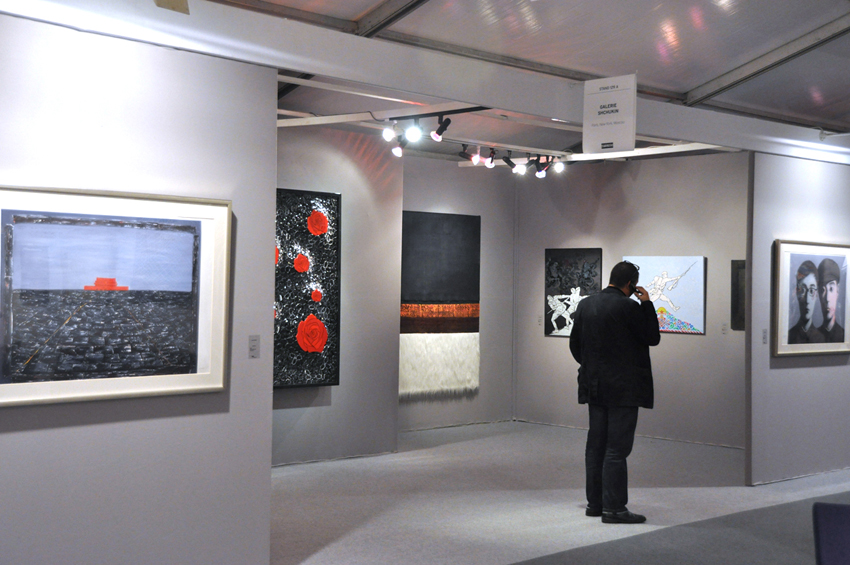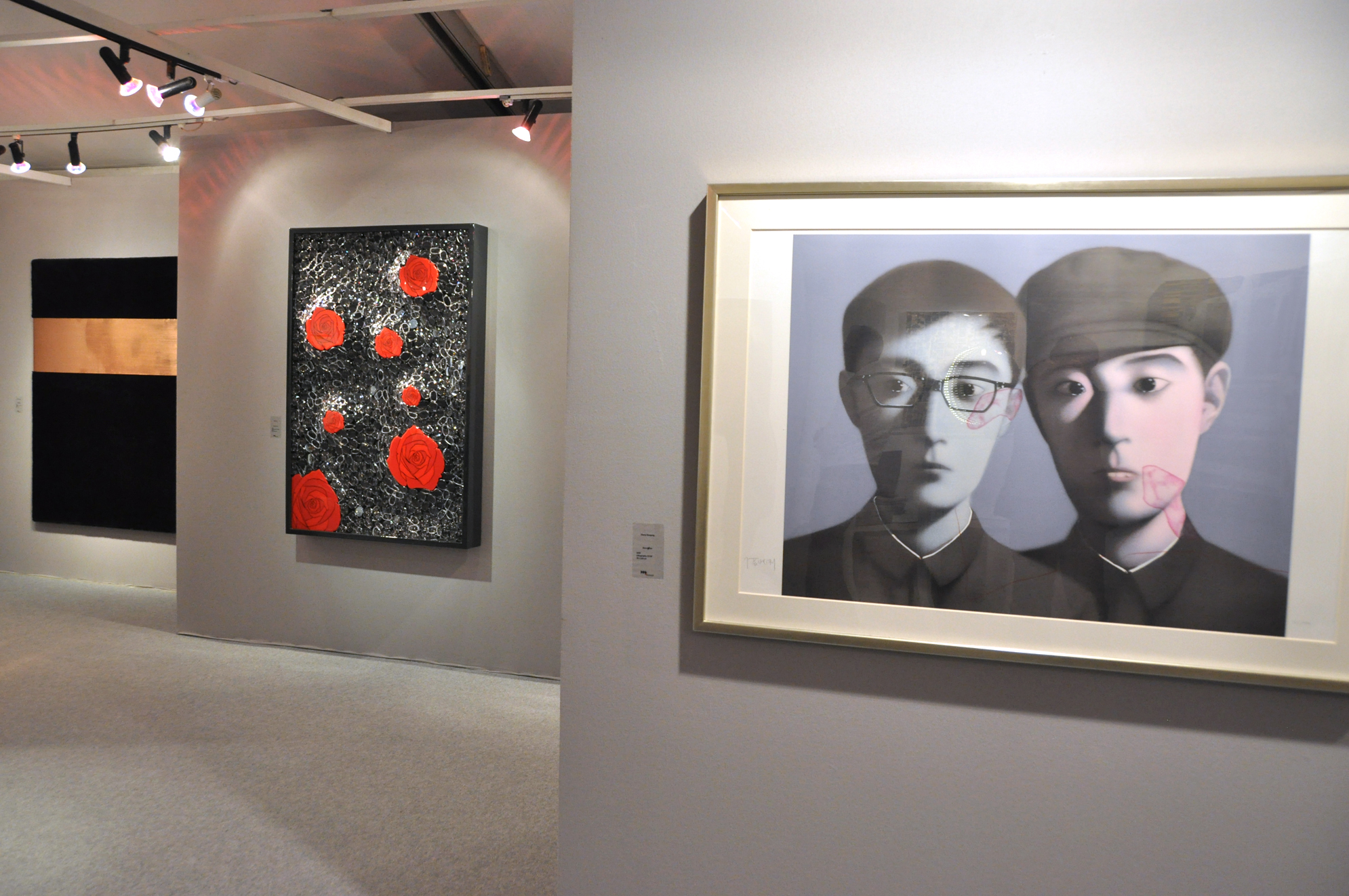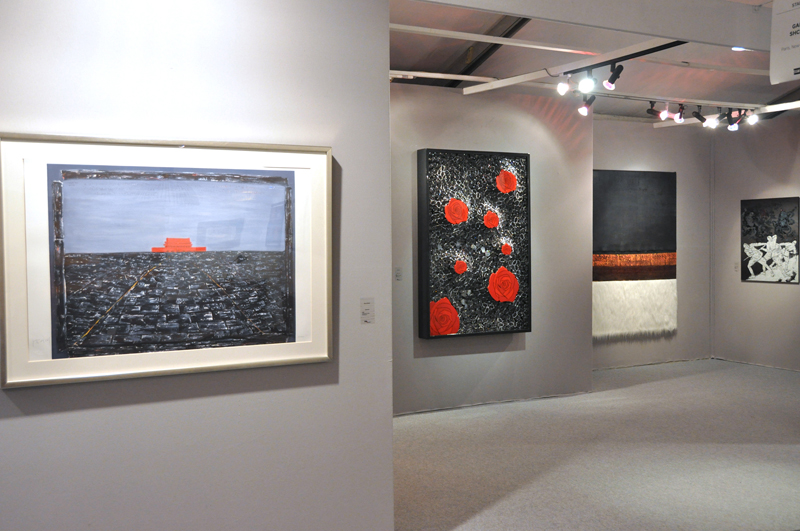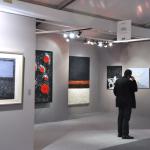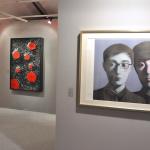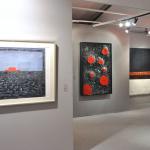Gallery SHCHUKIN at the Art Élysées art-fair
At the Art Élysées fair, Gallery SHCHUKIN presented the works of David Datuna, Zhang Xiaogang, Vladimir Migachyov, Aladdin Garunov, Andrei Shchyolokov, Sasha Semyonov, and Natalya Zaloznaya.
Gallery SHCHUKIN set up its stand at the Art Élysées fair which was being held October 24 through 28 in the Elysian Fields in Paris, an event that traditionally features major French galleries dealing with the art of the 20th and 21st centuries. The gallery’s major themes at the Art Élysées-2013 were the contradictions between the natural and the man-made, a quest for harmoniously apprehending the world through symbols Man turns objects into. Each of the gallery’s painters has his/her own ways of representing symbols and space.
David Datuna (USA) turns a symbol into an object, a sculpture into an installation, placing the subject of his consideration – the logos of leading brands, the flags of countries, the objects of the environment – within the space of optical lens refraction.
Zhang Xiaogang (China) and Vladimir Migachyov (Russia) explore the attributes of a generalized, spontaneous landscape. The human in this space is reminiscent of itself through scorched fields, embers on the sea-shore, or a shattered road.
The works of Aladdin Garunov (Russia, Dagestan) embody the presence of the spirits of a place in physical traces left by people: an object of daily life – the rug – becomes a symbol and an object of the environment which is perceived as an abstract landscape imbued with deep meaning behind the interweaving of traditions and the realities of the modern age.
Sasha Semyonov (France) depersonalizes the image, uses generalized symbols – the world in his works comes into being around an almost sacral image of a cross above which there towers a shirt. The physical temporal object serves as a token of spirituality and victory over the flesh: crucified is the cloth, but not the spirit.
Andrei Shchyolokov (Russia) collides two opposite things in the vein of the postmodernist tradition. The spaces of his paintings, mythological and historical, belong to the world of the invisible: the soldiers are here as ghosts of the past, and the spirits turn into symbols of the immaterial world.
Natalya Zaloznaya (Belgium) embodies spaces to be a physical display of recollections. Here each landscape is endued with millions of threads woven of words that were once uttered here.
